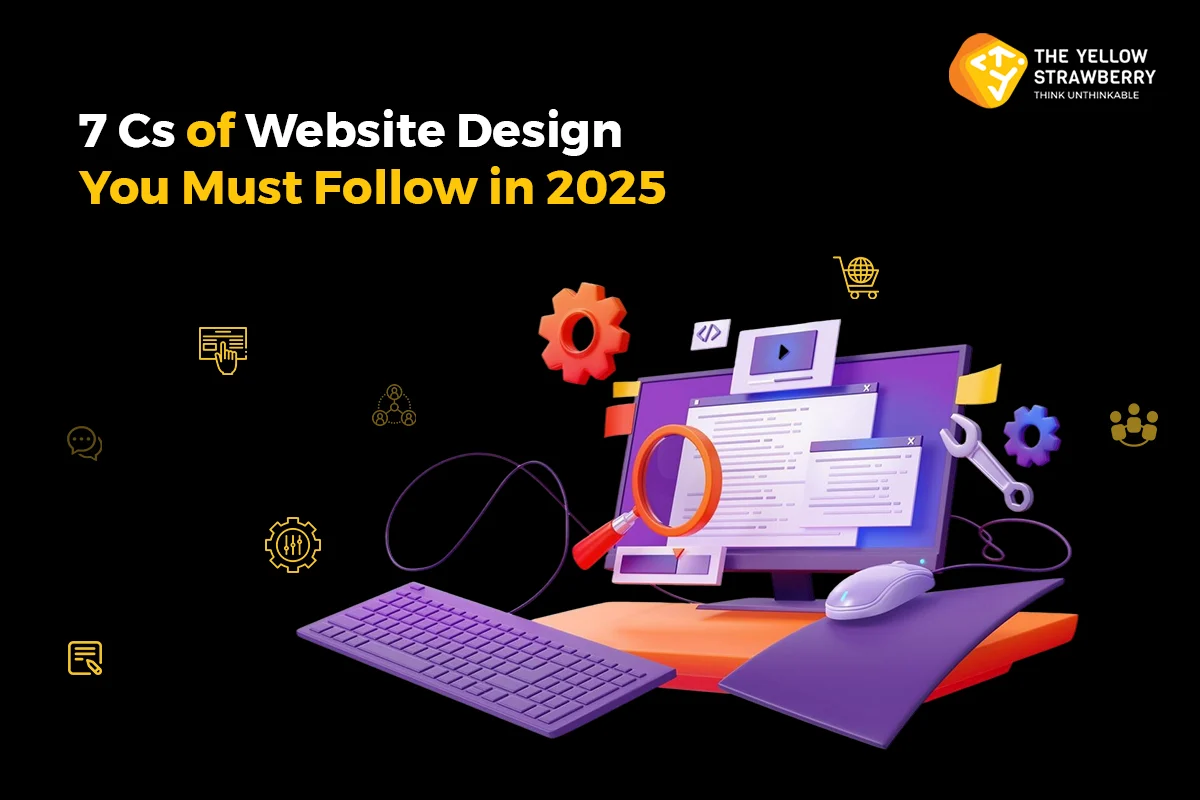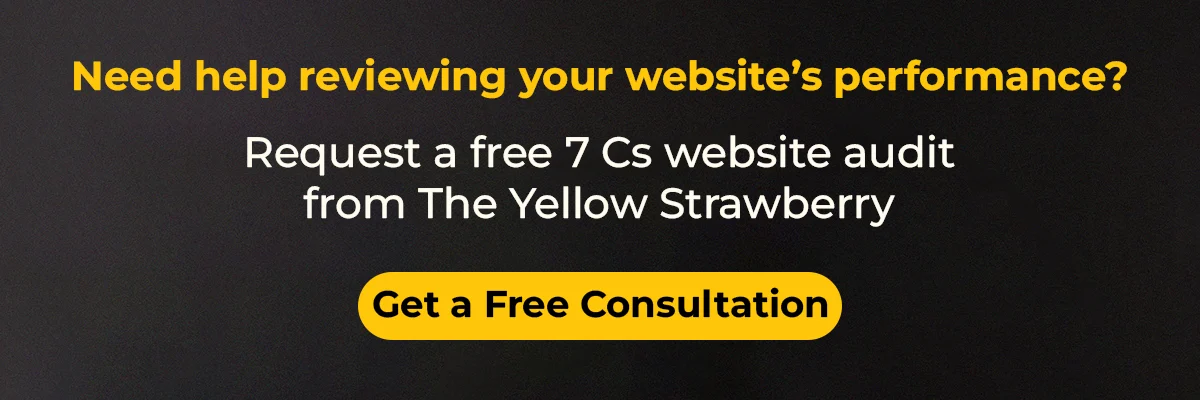
The year 2025 is when your site is usually the first impression prospective customers will have of your business. These first impressions develop over a matter of milliseconds and users are quick to decide whether they want to stay or go elsewhere. Most importantly, 75% of customers say they judge the credibility of a company by the design of its website. A well-designed, professional website creates trust, whereas unprofessional or confusing sites could send users running. In actual fact, 88% of users tend to not come back when they have a bad experience with a website. Designing a great site isn’t only about aesthetics It directly affects your bottom line through increasing the way people interact and convert. Studies have shown it is true that the first impressions of a website are 94% related to design and even high-quality content could be missed if displayed on a poorly-designed website.
The modern user also demands a user-friendly, mobile-friendly and responsive design. With more than 60% of web traffic is coming from mobile devices and tablets, a website that’s not optimized to work with tablets and smartphones will be a snare to over half of your customers. In addition, the Google’s search engine indexing for mobile devices means that the phone version of your website is the primary factor in rankings in SEO. What are the 7 Cs of Website Design are listed below to be useful website design tips to help businesses be successful on the internet.
What Are the 7 Cs of Website Design?
The seven Cs of web design are the seven fundamental guidelines that can help you ensure your site is functional and user-friendly. It is also conversion-focused. They’re a useful checklist for any small-sized company, e-commerce brand or B2B tech business looking to make improvements to their site. Here’s a quick overview:
Clarity The design and message are clear, so users immediately understand your website’s importance and purpose.
Coherence: A cohesive look and feel across all pages to provide an effortless, professional user experience.
Credibility Authority and credibility communicated through design quality as well as content (e.g. testimonials and safety badges) to boost confidence in visitors.
Content Relevant, high-quality SEO-friendly content that entices users and is well-ranked from convincing content to useful blog posts.
Compatible: Technical compatibility with every device, browser and assistive technologies – specifically the responsive layout especially for users on mobiles.
The ability to create: A unique, artistic touch that shows the personality of your brand and draws your customers (without the loss of usability).
Conversion: This is a designed with a focus on conversion that directs visitors to desired actions (sign-ups and inquiries, purchases) using effective calls to action and flow of users.
Every “C” plays a vital aspect in the success of websites. Let’s explore each in detail:
1 . Clarity: Keep It Clear and Straightforward
When you think of web design, clarity is king. Visitors who are new to your site are expected to be able on your home page and comprehend the reason behind it in moments. This means that your message the value proposition, your messaging, and navigation needs to be evident. Users won’t spend time to find out what you have to offer when they don’t know what they’re looking for and what they can do and the reason they should act and move on.
To get clarity, choose simple layouts, clear fonts, and simple language. Beware of clutter and information overload. Each part of a website must serve a specific reason for it; if you find something difficult to understand or distracting, you should refine or eliminate it. Make sure to prominently display your headline or tagline that explains precisely what you offer or provide. Simple headings and navigation menus aid users in finding what they require without causing them to be overwhelmed. Remember that design should aid users not overwhelm them.
2 . Consistency: Create a Cohesive Experience
Consistency in design creates trust and familiarity. A consistent design of a website implies having the same fonts, colours and layout on every page. If every page appears or behaves completely differently users may be confused and could question the credibility of the website. The most effective UI style relies on consistency across all pages including visual elements as well as terminology.
Branding elements such as the logo colour, colour scheme along with your voice must be uniform. For instance, if your Contact Us button is designed as a blue round rectangle on your homepage, then use that same design to design CTAs for other web pages. In the same way, the navigation menus and headings and footer layouts should be based on the same style and design. This will not only make your site appear professional, but also helps reduce cognitive burden, users aren’t required to re-learn how to navigate through your site every time they visit. Instead, they know what’s happening and navigate easily. Consistency creates a sense security and trust and increases credibility with your customers
3 . Credibility: Build Trust Through Design
Would you be able to trust a business with a website that appears to be an old dial-up site or has a lot of broken links and typos? It’s unlikely – also your clients. Credibility is about making your site appear credible, professional. The quality of your design is an essential element of this. One of the first steps in getting credibility is by making sure that your website appears credible and professional. This means a neat layout, top-quality images and a well-organized navigation system which demonstrates that you are aware of the needs of your users.
To improve credibility, ensure that your website is updated in both appearance and content. Display trust indicators prominently like testimonials, customer branding, cases studies as well as security certificates. Based on Stanford studies, 75% of people make judgments about the credibility of a business from its website layout, So investing in a sleek user-friendly and intuitive design is a good investment. Be transparent and include a simple contact page along with an information page and FAQ. Visitors are more comfortable when a website is open to providing details
4 . Content: Create quality content with SEO in mind
Content is the mainstay of your website. It’s the way you interact with and value your users, and the way search engines view your website. Your information on your site must be interesting, informative as well as relevant to the users’ demands. Make sure it is focused on the customer, answer their questions, address their problems, and explain the ways your products or services could aid them. Quality content not only impresses people, but it’s also an important element of SEO. Making SEO-friendly information can help your website be more prominent on Google for terms that your customers are searching for.
The importance of fresh content is not just in the content. Keep your site updated with blog posts or news This will not only indicate Google that your website is up and running, it also gives your visitors a reason continues to visit your site. For instance, blogs with informative content will encourage users to visit frequently, and keep them involved with your company. On the other hand, poor or obsolete content could hurt you’re the credibility of your site and its rankings. Make sure you have complete, accurate and up-to-date information throughout your website. If you treat content as a key design element and aligning it with your company style and voice to provide a richer and more SEO-friendly experience that will draw in visitors and convert customers.
5 . Compatibility: Design for All Devices & Users
In the world of multi-devices, compatibility is unavoidable. Your website should perform flawlessly across any screen size as well as browsers and platforms. This is achieved through an adaptive design which is a method of design that automatically adapts your website layout to be compatible with tablets, desktops and mobile devices. With mobile internet traffic representing more than half of all web traffic A mobile-friendly website design will ensure that you don’t lose a large part of your prospective viewers. Mobile compatibility isn’t just about the user experience, it can affect the search engine rankings as well. Google’s indexing process is mobile-first, meaning if your website isn’t optimized for mobile use, your SEO may be affected.
In addition to responsiveness, the compatibility is testing for cross-browser compatibility making sure the site functions with Chrome, Safari, Firefox, Edge, etc. as well as technical issues like fast loading times. Poorly functioning sites turn users away. For instance, that nearly four-fifths of people are looking for websites to load in 3-4 sec or less and most will leave a site that is too slow. Therefore, optimize your codes and images for speed and think about all users, even disabled users. In a nutshell, make your website functional and accessible to the maximum number of people possible. A website that’s compatible, fast, responsive and user-friendly across all devices will reach as far as possible and keep your visitors interested.
6 . Creativity: Stand Out by displaying Brand Personality
Although clarity and coherence serve as the basis, creativity is the element that makes your site memorable. In an online world that is crowded an injection of creativity style helps your business make a mark. Web design that is creative can refer to an appealing visual style and unique illustrations or graphics as well as engaging interactive elements or a unique method of displaying information. Engaging in creativity when designing your website allows you to show the uniqueness of your brand and capture the attention of your target audience. It’s essential to branding differentiation A well-designed website immediately communicates the uniqueness about your company, and gives an edge over an ocean of templates that are cookie cutters.
However, innovation should not be a hindrance to usability. There’s a balance to be struck with a design that is overly modern could confuse visitors. The solution is to blend creativity with the benefit of a solid function. Make use of creative elements to improve the user experience, and to evoke emotions, but not interfere with navigation or distract users. For instance, you could employ a striking colour splash or an unusual illustration style to add character, while also adhering to the most effective practices for design and navigation. When executed correctly, innovative design can entice visitors, strengthens your company’s story and will stay on their minds for a long time after they have left. Don’t be afraid of being different, but ensure that your design choices are compatible with your target audience and objectives.
7 . Conversion: Concentrate on Converting Visitors into Customers
In the end, a website for a business isn’t merely there to look nice It must transform visitors into customers, leads, or customers. A conversion-focused layout implies that every site is designed with a purpose in mind, whether it’s making a purchase using a contact form or registering for an email newsletter, or taking any other desired actions. The key idea is to limit distractions and bring the illusion of focus. If you provide users with numerous options or calls-to-action all at once, they might be overwhelmed and not take any. In psychology, this is referred to as analysis paralysis A lot of choices can lead to confusion. Instead, focus your readers in their focus to the one main goal for each webpage (e.g. one prominent CTA on the landing page). Make use of design elements such as size as well as colour and whitespace to draw attention to the conversion process, for example, a huge contrast “Get a Quote” button that catches the eye.
Other best practices for conversion design include putting important CTAs in prominent positions (above the fold, and later when they scroll) and using convincing micro copy on button labels like Get My Free Consultation instead of Submit, and reducing friction on the forms (ask only for information that is essential to make it fast and simple for users). Social proofing elements like testimonials or reviews, or even case studies placed near your call to actions can also help encourage users to act at a certain stage. It is also beneficial to simplify the entire user experience. In real life, this could be a simpler checkout process for online stores or a straight forward process for inquiries about service. When you design to convert at every step, the website is transformed from a simple brochure to a salesperson on the go that produces tangible results for your business.
Bonus: 7 Cs Website Design Checklist & Audit
Are you ready to put the 7 Cs into practice? We’ve put together a helpful 7 Cs of Website Design checklist which you can utilize to check the performance of your website. It’s an easy method of determining if your site meets the requirements of each of the seven pillars. Consider the following questions and if you notice the “no” answers or uncertainties there are areas you can improve:
clarity: Can a first-time visitor know the identity of your site and also what services you provide within 5 seconds from the moment they arrive on your home page? Does your navigation make sense and the labels easy to read?
Conformity Are all the pages on your website have a uniform appearance and feel? Do your footers, headers and menus positioned in a consistent manner throughout the site?
Trustworthiness: Does your site appear professional and current? Are trust signals (testimonials reviews, testimonials security badges, etc.) evident?
Content: Are you providing relevant, targeted content for your audience on the most popular pages? Are you constantly updating the content (blog or news) to keep it current?
Compatible: Is your site mobile-friendly and responsive across all devices? Have you tested your site across different browsers? Does it load fast when connected to a typical connection?
Creative: Does your website convey your brand image that makes it stand out among the competition? But at the same is it easy to navigate and use?
conversion: Each page is there clearly defined call to action that directs users towards the next action? Is your conversion process straight forward? Are you using design elements to attract attention to your CTAs?
Go through the above checklist, this will allow you to identify issues which could be affecting customers or affecting your credibility. If any of these checks identified red flags and you’re not sure of the best way to address them, you should consider conducting a thorough audit of your website. A professional review will provide practical suggestions for improving web design and performance
Conclusion – Your Website as a 24/7 Salesperson
In the end, achieving excellence in the web design – clarity, consistency, Credibility Content, Compatibility creativity, and conversion can ensure your company online success. A site that is simple and consistent allows users to browse effortlessly. A site that is trustworthy and has valuable content can build trust with your visitors. A responsive, compatible design makes sure that no user is left out, and creative thinking makes your brand stand out. With a focus on conversion, you can turn the faith and commitment into real outcomes to improve your bottom number. It’s not only about having a beautiful website in 2025. It’s about having a well-designed website that does the best job to help your business.
All of this may seem daunting however, you don’t have to do it all on your own. If you’re concerned that your website is lack in website design, why not seek assistance from an expert? we at The Yellow Strawberry have a specialization in designing beautiful, conversion-focused websites that are based on all of these fundamentals. From a thorough analysis and strategy to a complete overhaul, our web development team will make sure that your website not only looks incredible, but also works flawlessly. Let us assist you in turning your site into a potent marketing and sales tool. connect The Yellow Strawberry for expert web design and development services and discover the ways we could bring your clarity imagination and increased conversions together to increase your sales. Your website could be your most productive salesperson all day long Make sure that it is ready for the task!






